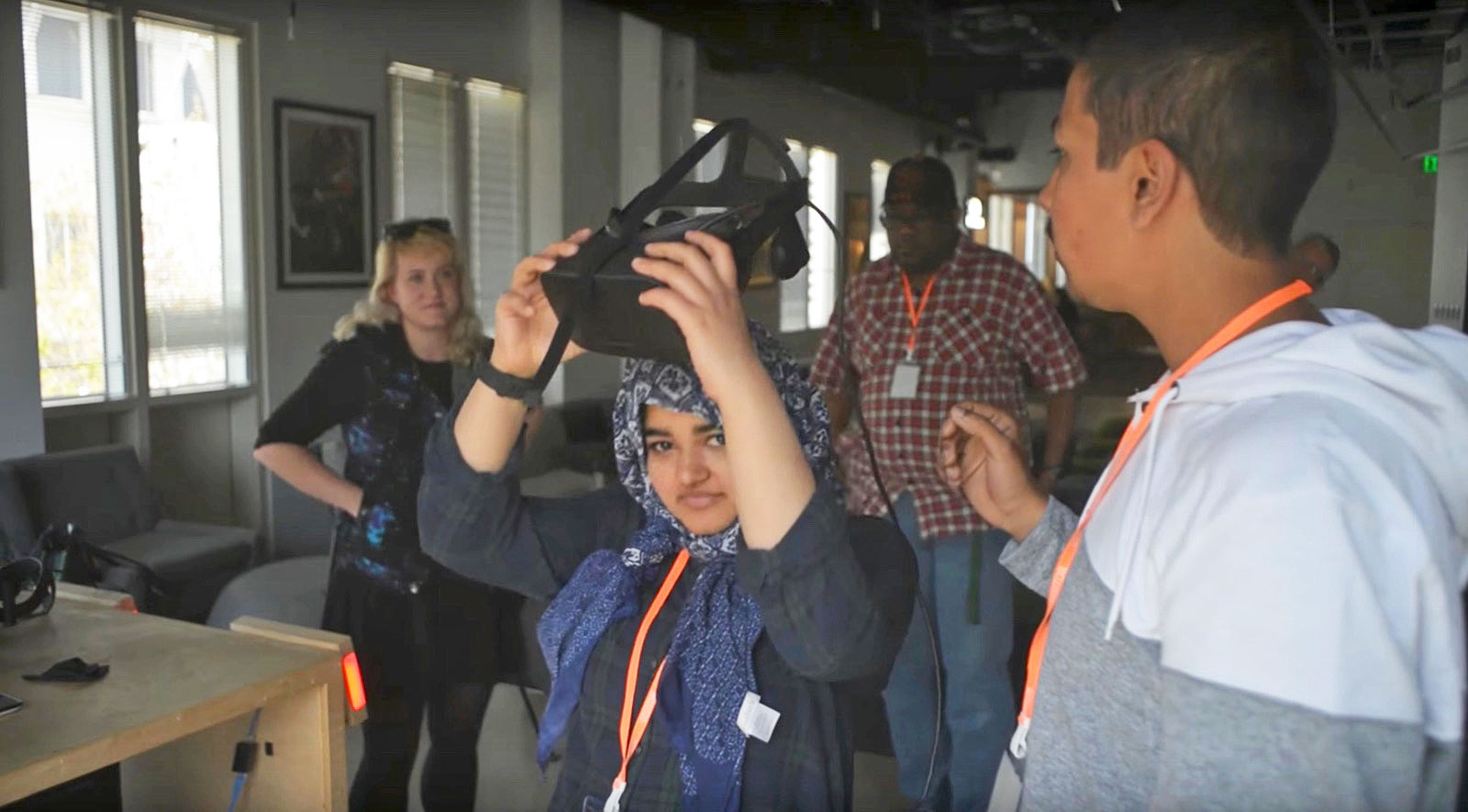Tag Archives: libraries
Sonos can now stream free audiobooks from your local library
Library Designs every book addict will add to their bucket list!

I’m a complete bibliophile! In fact, give me a good book and I can cuddle up with it, completely forgetting about the rest of the world. Hence, it’s no surprise that a library is one of my favorite places in the world, and I’m sure others share the same sentiment. Libraries are warm and comforting spaces with the promise of unlimited knowledge, and are the entryway to another world. So, we’ve curated a collection of exquisite and intriguing libraries that will awaken the bibliophile within each of you!

The Stuttgart City Library by Yi Architects is shaped like a neat little white cube. A central roof lighting illuminates the entire room creating a clean and crisp space where anyone would love to catch up on some reading!

The Tianjin Binhai Library designed by MVRDV & TUPDI took the entire architectural world by storm! The 33,700 square meter structure features floor-to-ceiling bookcases that are truly impressive. The bookshelves even create staircases, seating areas and louvers on the facade.


Snøhetta and Dialog’s new Central Library in Calgary, Canada is said to be one of the biggest library systems in North America. In fact, the structure even incorporates a fully functional light rail line. Featuring a glazed exterior with wooden interiors combined with unfinished concrete, the library has a very textured and organic feel to it.

The Old Library at Trinity College, Dublin was designed by Thomas Burgh. Opened in 1732, the library is a real architectural wonder and a safe haven for readers. In fact, the famous Long Room which houses almost 200,000 books is said to be an inspiration for the Harry Potter movies!


GMP Architekten designed the Suzhou No.2 library with an intelligent storage system that has the capacity to virtually hold up to seven million books. The exterior structure is meant to resemble a stack of books or sheets of paper. Transparent glazed windows add an ethereal feel to the structure.

The Starfield Library at COEX Mall in Seoul, Korea is one of the most modern libraries with the quintessential floor-to-ceiling bookshelves! Designed by Gensler Architects, the 2500 square meter structure with wooden interiors has a rather warm feel to it.

Wolfgang Tschapeller renovated the infamous Rand Hall at Cornell University, creating the Mui Ho Fine Arts Library with four sections of suspended books stacked one above the other. Seminar rooms, a maker space, a research lab, and digital fabrication shops are included in the space.

Andreas Schüring Architekten recently designed a library for the Cologne University in Germany. Inspired by the concept of order and freedom, the 700 square meter space follows a minimal monochromatic theme. Connected ceiling lighting subtly illuminates the entire space.

Located in Mexico City, this house by Pedro Reyes features an impressive double-height library with two levels connected by a rustic concrete staircase. In fact, even the bookshelves have been created from concrete, lending a very organic feel to the space.

Architects Bruno Gaudin and Virginie Brégal renovated what previously used to be France’s National Library. A new technical network was implemented so visitors can easily move from one room to another, but the original classic interiors were maintained as much as possible.
For more such enticing library spaces, click here!
Pokémon manga e-books are available in schools and libraries worldwide
 Pokémon manga e-books are now available to public libraries and schools worldwide through OverDrive, Inc. Students and library patrons can visit overdrive.com to find a participating library. From there, you'll be able to download Pokém...
Pokémon manga e-books are now available to public libraries and schools worldwide through OverDrive, Inc. Students and library patrons can visit overdrive.com to find a participating library. From there, you'll be able to download Pokém...
Marvel comics arrive in Hoopla’s public library app
 Comic books are a brilliant medium, but keeping up with the latest releases can be expensive. If you live in the US, it's worth checking out Hoopla; the service is supported by more than 1,500 public libraries, and offers free digital access to DC, I...
Comic books are a brilliant medium, but keeping up with the latest releases can be expensive. If you live in the US, it's worth checking out Hoopla; the service is supported by more than 1,500 public libraries, and offers free digital access to DC, I...
Your next trip to the library could include an Oculus Rift
 Public libraries aren't just for books anymore. These days, you can grab an e-book, movie or video game (not to mention learn how to code) at your local branch with nothing more than a free library card. Libraries are also the last bastion of interne...
Public libraries aren't just for books anymore. These days, you can grab an e-book, movie or video game (not to mention learn how to code) at your local branch with nothing more than a free library card. Libraries are also the last bastion of interne...
University of Michigan’s Computer and Video Game Archive houses over 3,000 different games, roughly 35 unique consoles (video)
Systems such as the ColecoVision, TurboGrafx-16 and 3DO may have been ousted from most home entertainment centers long ago, but they still have shelf space at the University of Michigan's Computer and Video Game Archive. Slashdot caught up with Engineering Librarian and Video Game Archivist Dave Carter and took a look inside the repository, which has curated around 35 classic and current-gen platforms and more than 3,000 different games. Having "one of everything" is the project's ultimate goal, but the logistics of acquiring every new game make achieving that feat a stretch. "Our realistic goal is to be sort of representative of the history of video games, what was important -- what was interesting," Carter said. "And then, not only to preserve the games, but also to preserve the game playing experience." As a "useable archive," patrons of UM's library can dig in and play at different stations with era-appropriate monitors and displays. While many visit for leisure, students have used the resource to research topics ranging from music composition to the effects of texting while driving (using an Xbox 360 racing title and steering wheel peripheral, of course). You can catch a glimpse of the collection in the video below or visit the archive's blog at the more coverage link.
University of Michigan's Computer and Video Game Archive houses over 3,000 different games, roughly 35 unique consoles (video) originally appeared on Engadget on Fri, 31 Aug 2012 20:48:00 EDT. Please see our terms for use of feeds.
Permalink | Slashdot | Email this | Comments
Slashdot | Email this | Comments Austrian city builds public library with nothing but QR codes, NFC and stickers
Strangely, the Austrian city of Klagenfurt doesn't have a public library, even though it hosts the Festival of German-Language Literature. However, an initiative dubbed Project Ingeborg is turning the municipality into a book repository of sorts with 70 QR code and NFC chip-equipped stickers. Plastered throughout town, they direct users to web pages where they can download public domain works, largely from Project Gutenberg. Oftentimes, e-books will be located in relevant locations -- so you'll be sure to find Arthur Schnitzler's The Killer near the police station, for example. Come August, the team behind the effort will partner with local talent to distribute books, music and other digital content too. In an effort to build a stronger bond to the location, the organizers have prevented search engines from indexing the links, so you'll have to visit Klagenfurt to access the curated goods. If you'd like to turn your city into a library, the group hopes to release instructions for replicating their system soon.
[Thanks, Michael]
Filed under: Cellphones
Austrian city builds public library with nothing but QR codes, NFC and stickers originally appeared on Engadget on Tue, 10 Jul 2012 06:20:00 EDT. Please see our terms for use of feeds.
Permalink | Pingeb (translated) | Email this | Comments
Pingeb (translated) | Email this | Comments Vatican and Oxford libraries scan ancient works, let scholars stay in their armchairs
Two of the world's most hallowed libraries are about to get even quieter, having been given $3 million to go with the flow and put some of their oldest collections online. The Vatican Library and Oxford University's Bodleian Library will together offer up 1.5 million pages of hoary text, including Gutenberg's Latin Bible from the 15th Century, a 1,200-year-old Hebrew codex called the "Sifra," and enough Greek philosophy to make even Homer seem succinct. At the end of a five-year flatbed scanner marathon, these digital copies will be accessible to speakers of dead languages everywhere, and hopefully for less than sacrilegious prices.
Vatican and Oxford libraries scan ancient works, let scholars stay in their armchairs originally appeared on Engadget on Mon, 16 Apr 2012 07:31:00 EDT. Please see our terms for use of feeds.
Permalink | PhysOrg | Email this | Comments
PhysOrg | Email this | Comments 

